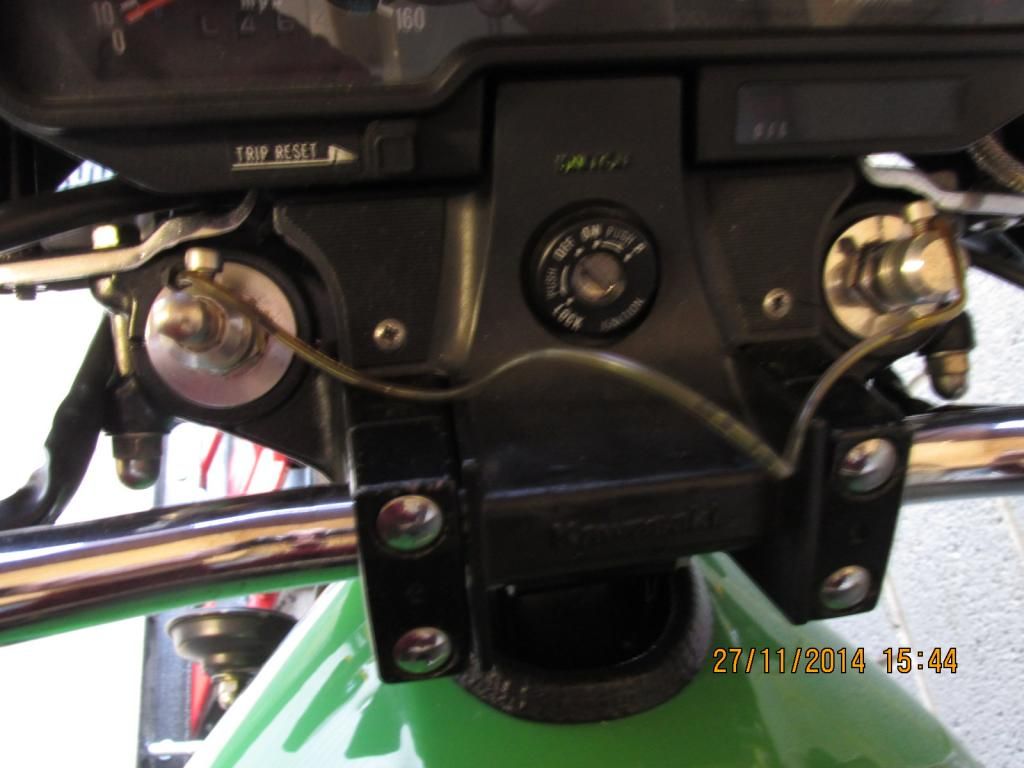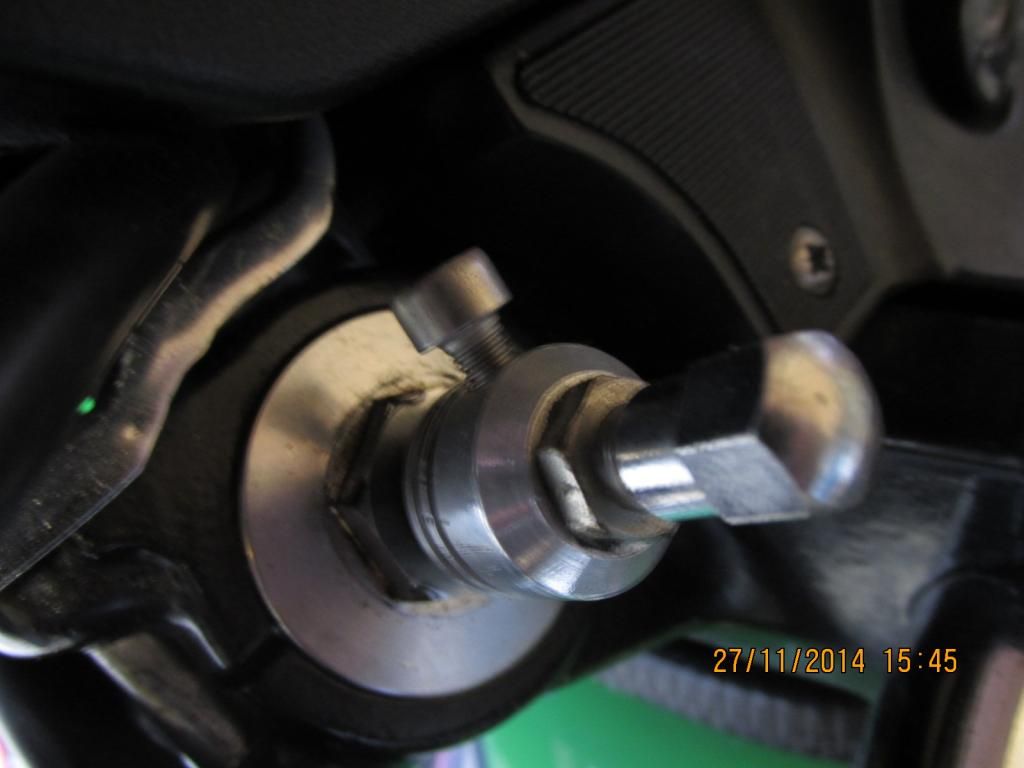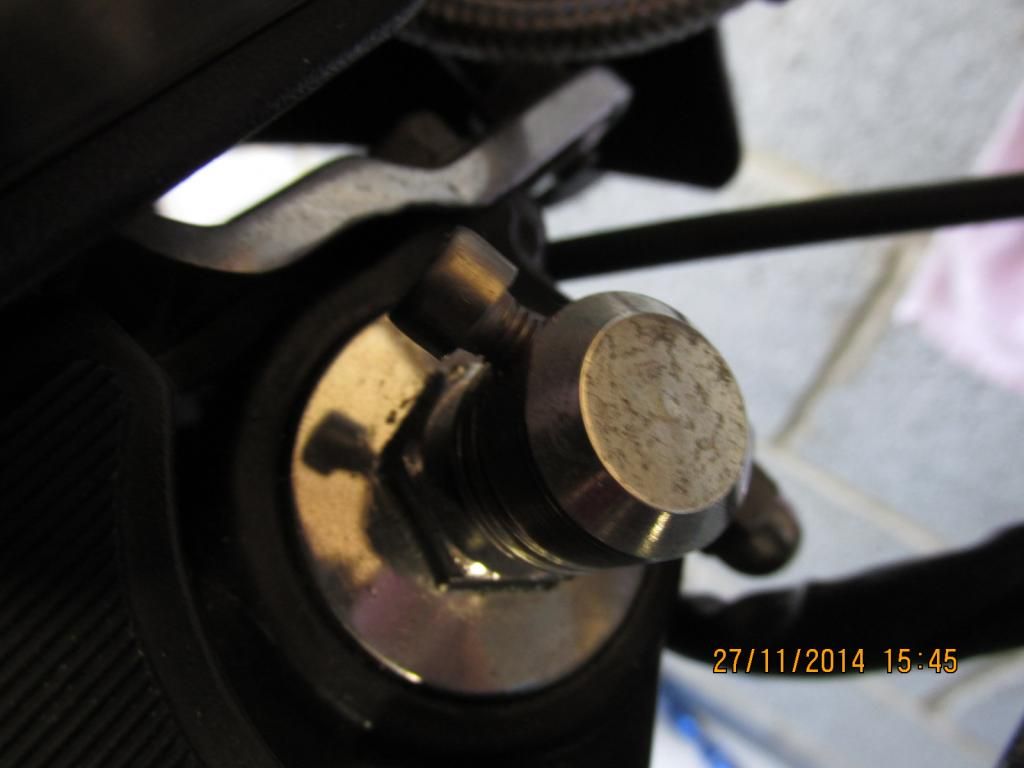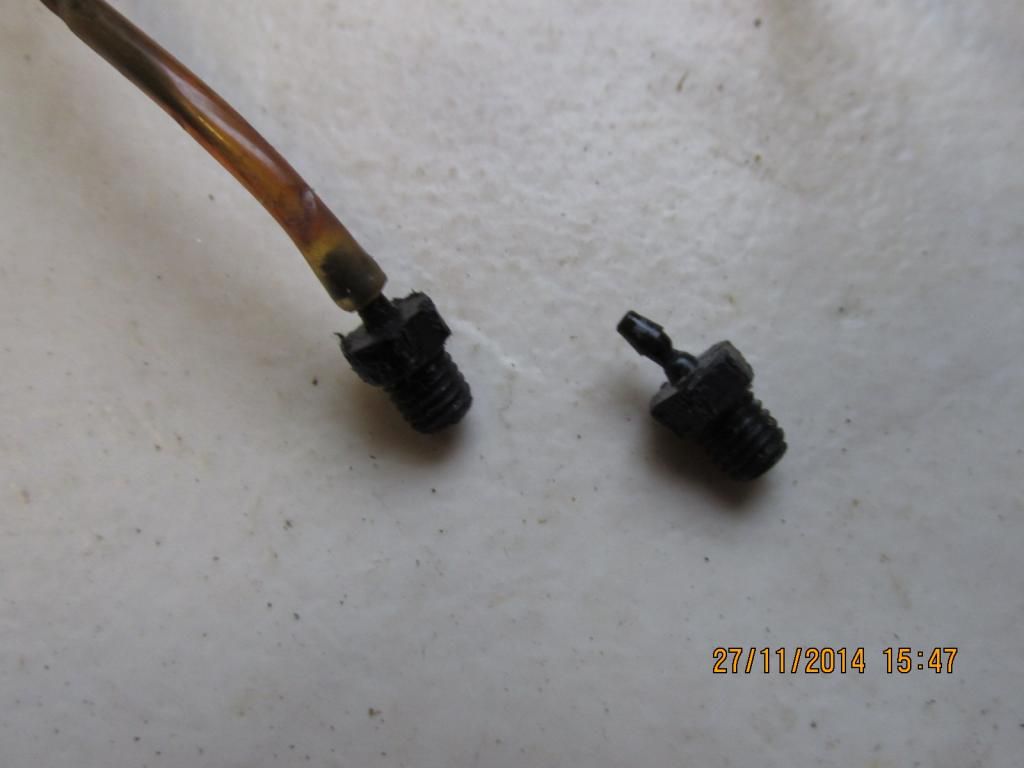Z1000 R2 front forks
Posted: Wed Dec 03, 2014 9:34 am
Author: Stugill
Hi.
The front forks on my 1984 Elr R2 started leaking last year and I had the seals changed. I then still noticed a small amount of oil and saw that the thin tube had a hole in it.
Ignore the M4 socket bolts as they are there to block the hole where the little black nipples were.
I have since found out that the caps and tube are not from an Elr.
I hope that someone on here might recognise what bike they are from.
Cheers
Stu




Posted: Wed Dec 03, 2014 9:57 am
Author: z1bman
they are the original tops but someone has made a pigs ear job of modifying them to balance the air pressure. the original tops have individual air valves to pressurise the forks & are not linked together
they should be very similar to this
http://www.ebay.co.uk/itm/NOS-KAWASAKI- ... 2ecf0fe78f
Posted: Wed Dec 03, 2014 10:17 am
Author: Stugill
Thanks
So each side should have a valve, with no threaded hole ?
That makes sense as it is indeed an interesting engineering job.
It looks as though I will have to try to source two of the complete unaltered valves.
Cheers
Stu
Posted: Wed Dec 03, 2014 12:16 pm
Author: z1bman
Posted: Wed Dec 03, 2014 4:24 pm
Author: PAULJAC47
I believe the air in these type of forks only comes into play under max compression if its too much of a job to fix, fit progressive springs instead and do away with the air!
Posted: Thu Dec 04, 2014 8:26 am
Author: needaz1100r
The air in all forks acts as a spring, except some Ducatis, early Harleys etc which had a breather hole in the cap.
When you fill your forks with oil to, say, 100mm from the top and then seal it with the cap, the air inside is at 15PSI, atmosphere.
If the lower fork leg travels 50mm, the oil is pushed up and the air volume halves and the pressure doubles, now 30PSI pushing on the top of the oil, and therefore pushing down on the lower leg.
If the fork travels a further 25mm, the volume halves again, the pressure
doubles again, now 60PSI pushing on the top of the oil, and therefore pushing down on the lower leg.
A further 12.5mm and the pressure is now 120PSI.
Air springs are true rising rate because of this, as you say Paul, it does have maximum effect at max compression and does help to prevent bottoming out.
The caps fitted to some Japanese forks, allow you to change the starting point - add 10PSI, and the starting pressure is 25PSI.
50mm of travel = 50 PSI.
Another 25mm = 100PSI
Another 12.5mm = 200PSI
The balancing mechanism on some forks is because it is logical to think that the pressure in each fork needs to be identical or the forks will twist, in fact the spindle clamped into the legs, the two wheel bearings fit in the spindle and the mudguard stay mean that the fork legs act as one and the differences will simply average out.
Don't believe me, look up the H**** Pan European ST1100, that has compression damping in one leg and rebound damping in the other.
Stugill it looks like you could unscrew the aluminium adaptors that someone has fitted to your standard fork tops and fit the standard air valves. If the thread has been changed to suit those adaptors you could just blank them off with a bolt of the correct thread, the forks will work perfectly.
Posted: Thu Dec 04, 2014 4:36 pm
Author: Stugill
Mark and all those that replied.
Thanks very much for the advice - perfect, I will crack on and sort it out.
Cheers
Stu







